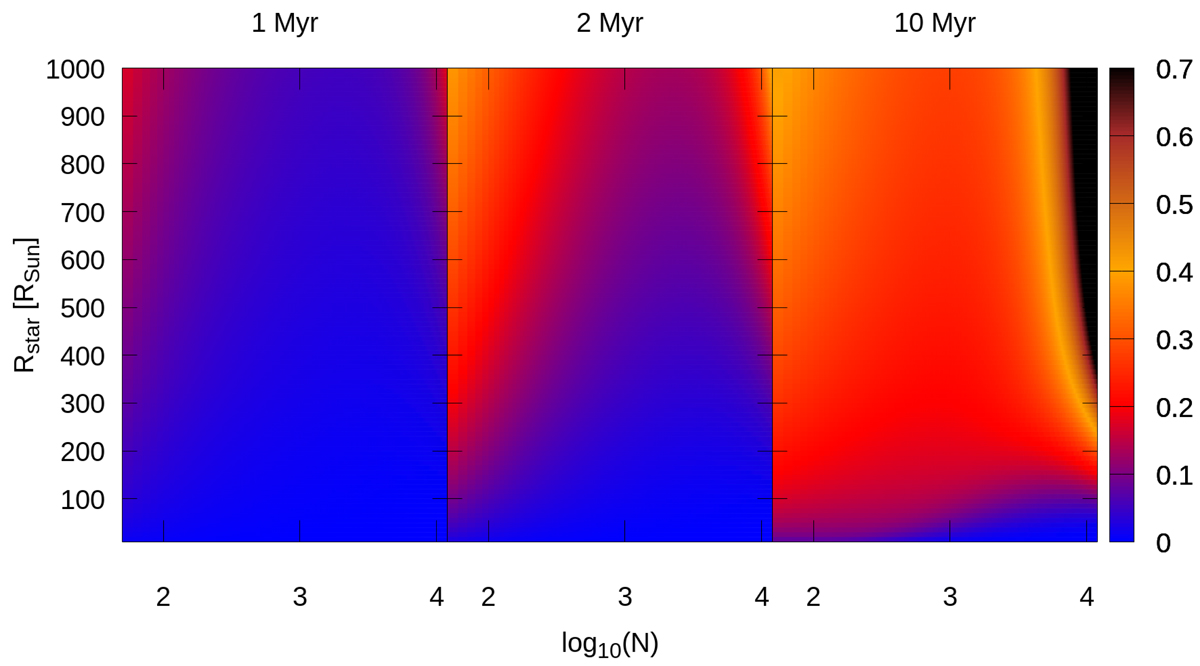Fig. 15.

Fraction of stars fmerger that merge with the central star in a cluster with a total stellar mass of Mstars = 104 M⊙, a virial radius of Rv = 0.14 pc, and an external potential with a mass of Mext = Mstars after 1 Myr (left panel), 2 Myr (middle panel), and 10 Myr (right panel) for different combinations of the number of stars N and the stellar radius Rstar calculated using our model presented in Eq. (8). We can see that when the collisions are maintained for short periods of time, that is, 1 Myr, an object that is not so massive with ∼fmergerMstars = 0.1 × 104 M⊙ = 1000 M⊙ is formed in the cluster center only when N is very small (given that tdelay becomes larger than the integration time for large N) or when Rstar is large. If the time limit is 2 Myr (middle panel), we expect that clusters with a small N experience core collapse and form a massive central star. However, if the number of stars is large and Rstar is also large, given the higher velocity of the stars in those clusters compared to clusters without the external potential, there is a larger probability for hyperbolic mergers to occur before core collapse, which we see on the right-hand side of middle panel. If the time limit is long, that is, 10 Myr, most of the clusters form stars with ∼0.3−0.4 Mstars = 3000−4000 M⊙ and even 0.7 Mstars = 7000 M⊙ if N is large enough.
Current usage metrics show cumulative count of Article Views (full-text article views including HTML views, PDF and ePub downloads, according to the available data) and Abstracts Views on Vision4Press platform.
Data correspond to usage on the plateform after 2015. The current usage metrics is available 48-96 hours after online publication and is updated daily on week days.
Initial download of the metrics may take a while.


